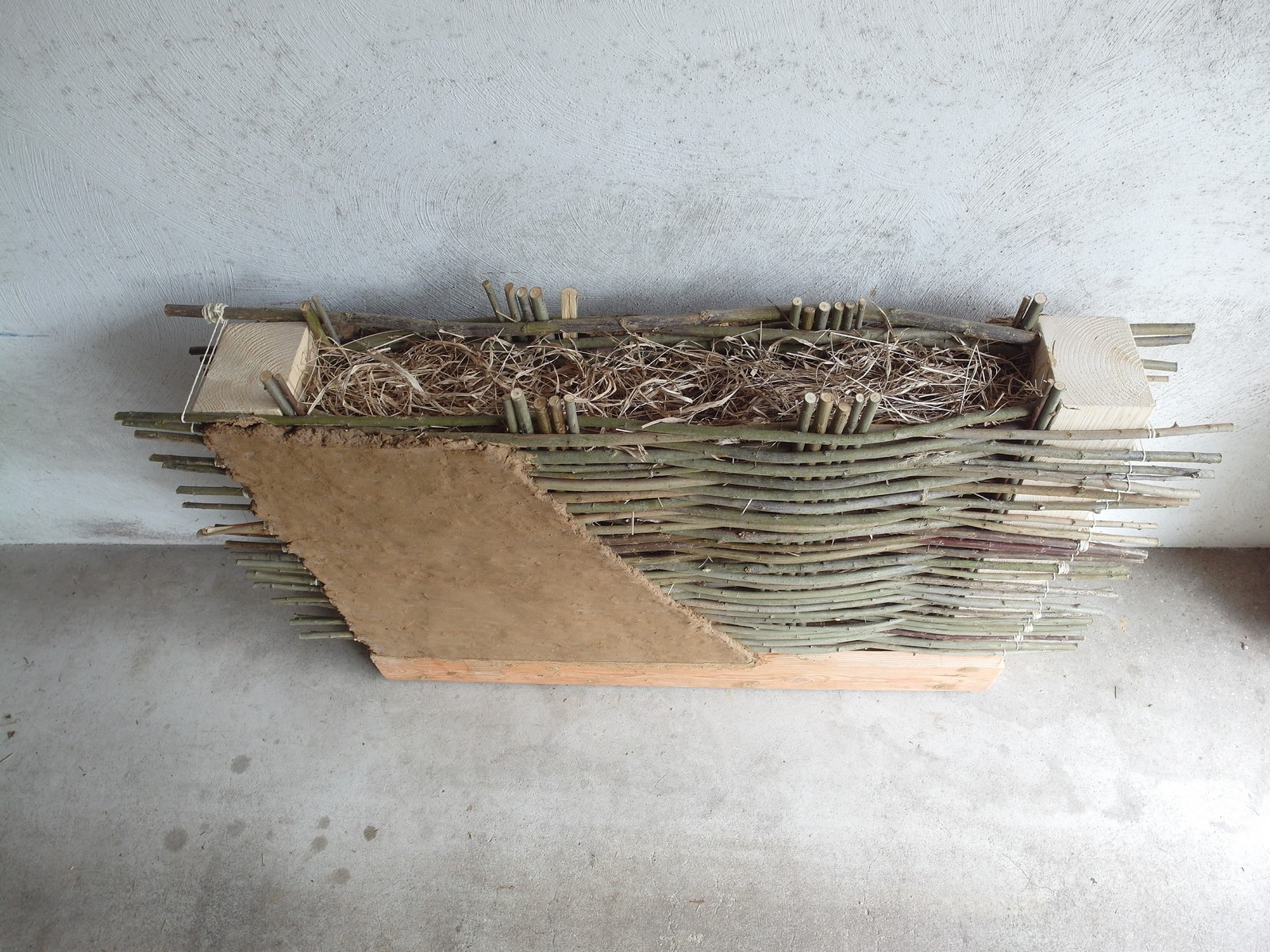So last EcoEcho Forest Cultivation post - I showed the scythe I used to cut this grass field. Now I used that rake to make the hay mounds and then I stuffed the hay into a big rubber garbage can. So I estimate one garbage can = 1 small bale (that retails for $6).
Sure enough - I documented my words.
So then I used a big knife to cut the hay - so that it mixes better to make a "clay slip" - saturating the hay or straw into the clay water. This desiccates the straw to make it more fire proof and rot proof.
Here is the product - of cut hay that has been mixed into the clay slip. Ready to put into the walls as insulation!!
Here is the mixing pit - with the hay over the clay-water. So I just stomped on it and then folded it over, etc. Until all the hay was covered in clay.
Finally - the Bronze Age reconstruction!! Actually this batch still has some grass in it. Well according to the academic archaeology article I cited - they used GRASS.
I'm talking them literally since you would think academics would be precise about the difference between grass and hay and straw, etc. But who knows? I'll have to reread it.
OK you get the point though - it looks very very similar to the Bronze Age reconstruction photo I posted before...
This is the other wall - these are the 12 foot walls, the long walls.
So slowly it goes up. This is VERY VERY tedious work. I have to cut each willow branch and then cut off the willow leaves - and then haul about a dozen branches - about a quarter mile. I used to fill a whole garbage can but that was just too heavy and too bulky to haul through the forest trail. So I figure more trips with less hassle.... Then to weave the wattle you really want gloves or else the tension can trap the skin - pinching it painfully. But it is also quite artistic I think - again no measurements. Obviously.
It's like an artistic basket or something.
A bit higher - but that much progress deserves a new photo!! Think of each 2 x 4 width taking an hour of work. Also I had to "add" more wattle on the end - so it meets in the middle but seems to hold up well.
It's hard to tell but I used the Loppers to clear a path as I moved deeper into the willow patch - harvesting the willows as I went along. At one part of the willow patch I discovered the bee nest - it's a Ground Bee nest. I must have stepped on it - as the hive was buzzing ferociously. I cleared out fast and kept away. But a couple days later - after I saw one big "bumble bee" yesterday and this morning I went back to the nest - I saw a bee leaving the nest! So hopefully I didn't destroy the nest.
Here's a couple loads of wattle waiting to be weaved into the wall.
Here's how far I got on the 2nd wall. The first wall I finished.
So I'm gonna put clay and lime on top of the wall - where it hits the "wall plate"? what's the "Man-talk" word again? Wall beam? It's NOT wall sill. It's some other fancy word. I think Wall Plate....
The U-factor/value is between 0.5 to 1.0 W (m²K) according to how densely the grass was stuffed in and how coarse or fine the grass was. “Very humbly we should acknowledge that comparable high insulation values were not reached again until the heat-protection-regulation of 1995. In the thousands of years in between the insulation grew four to six times worse with timber framed houses, three times worse with solid brick walls. Progress sometimes leads us back to proven methods from the past”, says Werner Eicke Hennig from the Hessian Energy Saving Action (Eicke Henning 2009).
It's 6 inches thick - and after I got the first wall pretty much done - and I was laying on the cot as it get cold at night - I could FEEL the heat difference compared to the 2nd wall that was still mainly open. So that encouraged me a lot to keep at it. But since this process was SO SLOW and tedious - I decided to only do the long walls as wattle and daub. I used 12 bales of hay - and actually since it rained - the grass was still not dried into hay. So it took a lot of extra effort to "smear" the grass with clay - since it did not soak up the clay slip water. So also I lost my water supply - as my ceramic water "bucket" 12 ounce - broke on the iron pipe I forgot had broken off in the bottom of the well...
So for part 3 - I'll cover the end walls.


















No comments:
Post a Comment